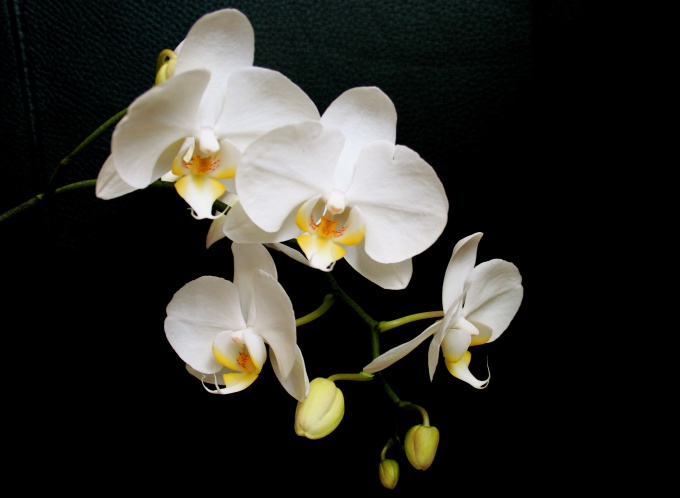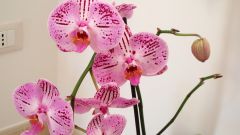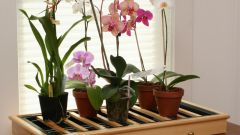You will need
- Transparent plastic pot
- Special substrate
- Ambient light
- High humidity
- A warm shower
Instruction
1
Choose healthy plants. Those orchids, which are now sold in flower shops and various supermarkets, mostly belong to the Phalaenopsis (Phalaenopsis) is specially derived to orchids, adapted to the content in the home.If you buy an Orchid, not to get a gift, look at it closely. The leaves of healthy plants are resilient, bright green or with a reddish tinge. The dried, yellowed leaves, talking about the poor care and if you are a beginner gardener, you may not be able to cope with the restoration of the plant. Leaves with black or brown spots, cobwebs or mould testify to disease of a flower. Such plants are also not for beginners.Orchids are grown in clear pots. If the flower is Packed in a decorative planter is not only harmful for him, but does not allow you to consider the roots of the flower. Maybe the seller has something to hide? The roots of healthy plants should be firm and fleshy. Color ranges from light green, ideally, to dark green if the flower for a long time to "fill" or silvery whitish, if the flower is not enough moisture. The roots, seeking "to escape" out of the pot indicate good health of the plant.
2
Tropical Orchid adapted to the temperature extremes, but is unlikely to bring severe frosts. Pack the plant not only in paper but in plastic bag to create a greenhouse conditions until he goes "home".
3
It must be remembered that under natural conditions orchids grow in the ground, and clinging to the roots of the trunks and branches of trees. They get moisture from the air and when their waters warm tropical rain, nourishment from decaying wood remains, bird and animal droppings. They are not accustomed to direct sunlight, as I live in the shade of the trees.The best place for it is near a window facing East or West. Not much worse than it will feel on the sill of the South-West and South-East Windows. On the North window or away from natural light, the flower will either need additional or permanent highlighting. On the South window, on the contrary will have to apply shading in the period from may to September.
4
Orchids are grown in clear pots with good drainage and in a special substrate composed of bark, coconut fiber, charcoal, cork and moss. Such conditions emulate a natural habitat for these flowers. You can put a plastic pot with the Orchid in decorative pots of glass or in a wicker basket, but not in ceramic or pottery. The substrate must be completely fill the pot and hold the flower upright.
5
Watering is perhaps the most difficult part of care of these plants. Never water an Orchid from watering, do not pour water in the pan and don't let the roots and the features of the sheet vortex for a long time in the water. At low humidity, the flowers require extra spraying, but not watering. Orchid watering only when the substrate is completely dry. Take the flower in the tub and turn on the warm shower. Water until the substrate does not get wet to the bottom. Turn off the water and put the pot on the grill so the excess water flowed freely for 10-15 minutes. Pat leaf funnel paper towels. Water the flower in the morning or afternoon, to night he has time to dry.If the plant lacks moisture, it signals the fading leaves, if Orchid the constant excess of moisture , the roots of the flower begin to rot.For orchids is very important humidity level. In autumn and winter when the Central heating is enabled, create flower constant source of moisture. Fill the tray with small stones, pebbles, decorative glass pebbles and pour water. See that the water is constantly evaporated, but did not reach the pot of flowers.
6
During flowering the plant can be fertilized weekly during the rest period every month. In flower shops you will find a wide selection of specially selected fertilizers.
Useful advice
After the Orchid Bud, the flower and let the process to die naturally and only after that cut.


